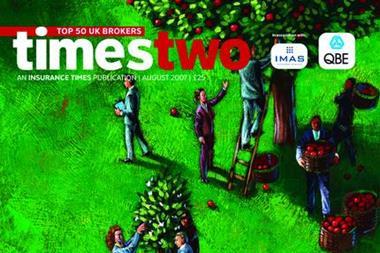Organisations that shift to a process-driven structure can expect to find the Holy Grail of a customer-based industry, says Terry Richardson
In business, the quest for maximised profit and lasting success is as demanding and fraught with obstacles and perils as any quest undertaken in medieval fables by knights seeking the Holy Grail.
To win that Holy Grail today you need to run your organisation so that all your resources are focused around delivering your strategy and meeting the needs of your current customers, and are perfectly placed for meeting their future needs, too.
The Holy Grail isn’t won by blindly applying one of the many management fads that surface from time to time in business schools and industry conferences.
Instead, it involves following a strategy that is down-to-earth, intensely practical and intimately wedded to the very reason for your organisation’s existence.
Above all, what you need to do is to orientate your entire organisation both culturally and operationally around the business processes that lie at its heart.
In business, a process can be defined as a series of steps that produces a specified deliverable to meet a targeted customer need.
This definition is precise: the steps of activity must actually meet customer needs successfully.
A series of steps that doesn’t meet customer needs can’t properly be regarded as a process, or at least not an effective one. All organisations must, by definition, have at least one process if they are going to be in business at all. If they don’t, they won’t have any customers.
Whatever the precise nature of the process or processes an organisation carries out, the very fact process is actually defined in terms of delivering a benefit to customers leaves no doubt that process is not only at the heart of the organisation but is the heart of the organisation. The organisation is, in fact, the sum of its processes.
All business processes must contribute to delivering products and services to customers both now and in the future. Any business strategy must impact on that delivery either by satisfying existing customers more, satisfying more customers or by doing either with fewer resources.
A business’s processes essentially mean two things to it as an organisation. Firstly, they are the method by which it delivers to its customers whatever they require from it. Secondly, a business’s processes are, almost by definition, the consumers of that business’s resources.
Process is a crucial key to both implementing and developing strategy in any useful sense at all.
Not that you would believe this when you consider just how much – or how little – effort and attention most organisation’s senior executives devote to understanding and managing their processes.
“Changing from an organisational focus to a process focus is not just a superficial change; it’s a root and branch rethink of how the organisation should work
Indeed, in practice, an alarmingly high proportion of boards and senior managers ignore processes pretty well completely.
Why don’t boards see that managing processes properly is the key to achieving the Holy Grail of running a business today? Why do they overlook the overwhelming strategic importance of process?
There appear to be two main reasons. The first is that organisations often adopt the short-sighted approach that processes are nothing more important than the consequence of their strategic thinking.
The truth of the matter is that the board must keep the organisation’s processes firmly in its sight – and mind – at all times. After all, unless a strategic decision made at board level is indeed being implemented properly and successfully embodied in the organisation’s operations, the decision is really just hot air.
The second reason has to do with the way most organisations are structured. The problem here is that organisations are typically structured by function. Such a function-based structure is not friendly to the task of managing process properly, or even to being fully aware of what all the organisations’s processes actually are.
This basic structural problem is often such a major obstacle to successful board-level process management that even if the board wanted to manage process it would find it very difficult to do so.
For such organisations, the Holy Grail is not so much hard to find as shattered into numerous scattered fragments.
Today, the strategic concept of customer focus is more and more being used as a convenient thumbnail summary of the imperative to focus an organisation around the customer’s needs.
Many organisations have attempted to become more ‘customer-centric’ by, for example, implementing CRM (Customer Relationship Management) systems.
But the CRM system, like any other IT system, cannot deliver this by itself; it can only ever be an enabler. This is why so many CRM implementations can fail. If organisations rely on the technology to make them more customer-centric without a clear focus on the processes it needs to support, the implementation is likely to join the majority of system implementations that do not live up to expectations.
For all these reasons, shifting to a process-driven structure, while requiring some radical changes, is the map that leads to the Holy Grail of a customer-focused approach to business, with everyone working to deliver the strategy and fulfil the organisation’s potential.
Changing from an organisational focus to a process focus is not just a superficial change; it’s a root and branch rethink of how the organisation should work. Delivering the Holy Grail of having all your resources focused on strategic delivery and on delivering effectively and efficiently to customers is the goal. The quest to find the Holy Grail will be the single most important business journey that you will ever make – and the most profitable.
Downloads
Top 50 Brokers 2007 - PDF
PDF, Size 6.59 mb

































